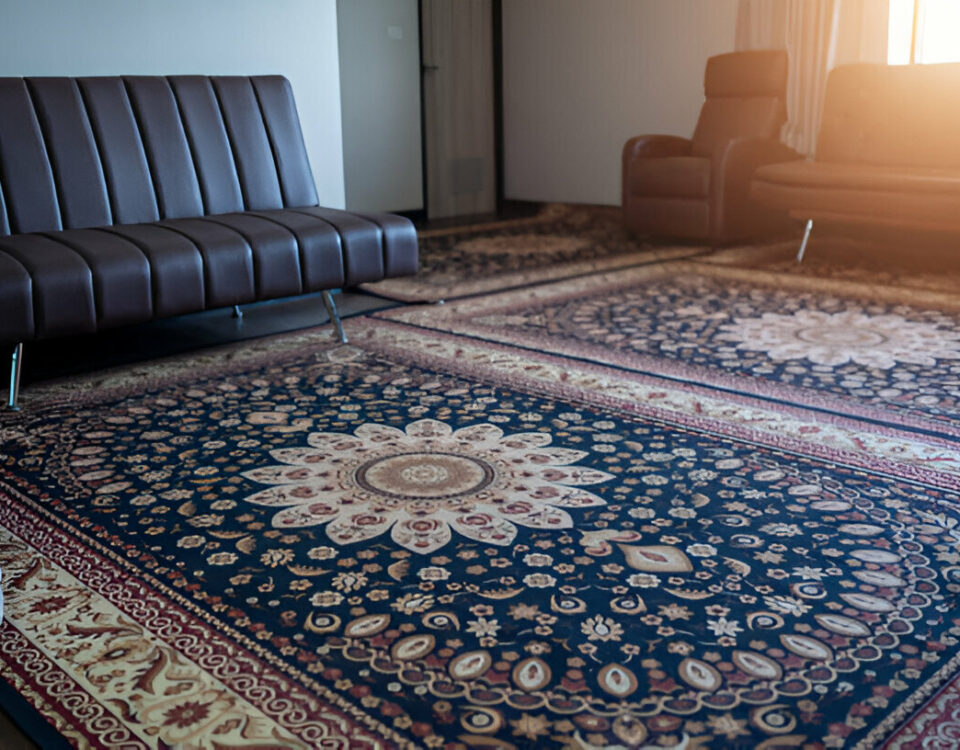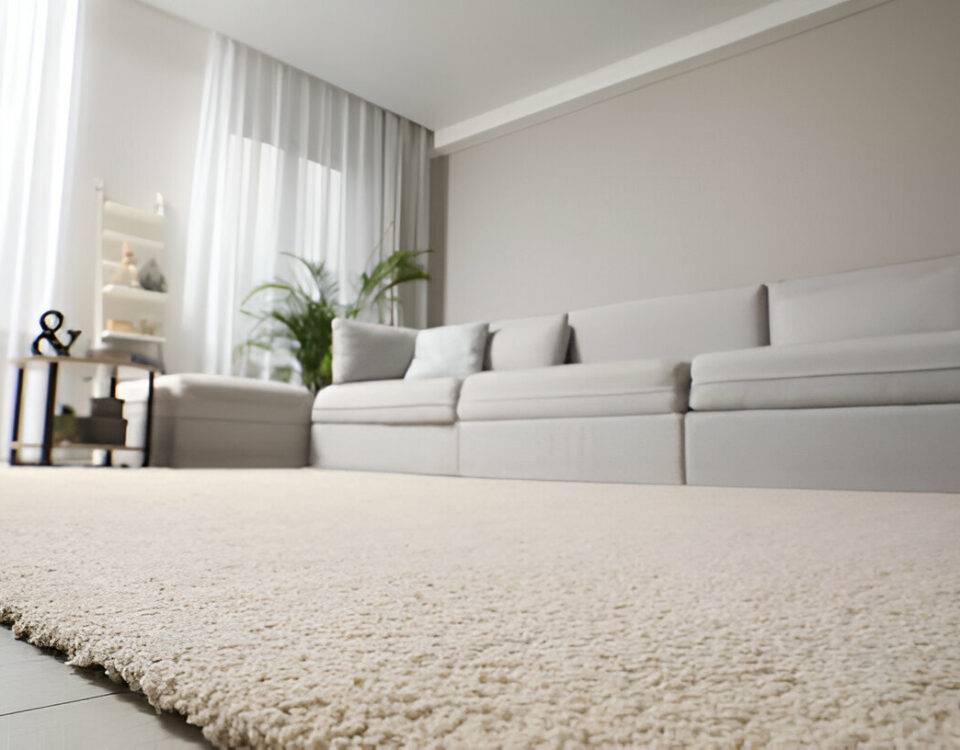
Which Carpet Style is Most Popular?
October 10, 2024
Why Office Carpets Are Essential for Noise Reduction
January 24, 2025Now a days, homeowners are looking more and more for environmentally friendly carpet options that complement sustainable lifestyle choices. Choosing the right carpet not only enhances the aesthetic appeal of your home but also contributes to a healthier environment. This comprehensive guide explores various sustainable carpet options, materials, and maintenance practices suitable for modern homes.
1. Natural Fiber Carpets
Natural fibers are a top choice for eco-friendly carpeting due to their renewable and biodegradable properties. Materials such as wool, sisal, and jute offer durability and a natural aesthetic.
- Wool Carpets: Known for their softness and resilience, wool carpets are naturally flame-resistant and help regulate indoor humidity. They are an excellent choice for areas like stairs carpets, providing both comfort and safety.
- Sisal Carpets: Derived from the agave plant, sisal is a robust material ideal for high-traffic areas. Its coarse texture adds a rustic charm to the interiors.
- Jute Carpets: Softer than sisal, jute is suitable for low-traffic areas. It brings a warm, earthy feel to spaces like bedrooms and home offices.
2. Recycled and Recyclable Carpets
Utilizing recycled materials in carpeting reduces waste and conserves resources. Options include carpets made from recycled PET (plastic bottles) and reclaimed nylon.
- Recycled PET Carpets: These carpets are stain-resistant and durable, making them suitable for families with children and pets. They offer a sustainable alternative without compromising on quality.
- Recycled Nylon Carpets: Manufacturers now offer carpets made from recycled nylon, known for its durability and resilience. The recycled nylon production process consumes less energy and resources than manufacturing virgin nylon, reducing environmental impact.
3. Low VOC Carpets
Indoor air quality is a significant concern, and traditional carpets can emit volatile organic compounds (VOCs). Opting for low or zero VOC carpets ensures a healthier indoor environment.
- Natural Dyes and Finishes: Many sustainable carpet options use natural dyes and finishes, eliminating the need for harsh chemicals that may emit VOCs. Choosing carpets with natural dyes not only enhances eco-friendliness but also brings a warm, organic appearance that synthetic dyes often lack.
- VOC-Free Adhesives: Some carpets are designed to be installed without VOC-emitting adhesives, reducing chemical exposure in your home. Alternatives such as low-VOC or water-based adhesives are available for carpets requiring adhesives, ensuring installation is environmentally friendly from start to finish.
4. Sustainable Carpet Backings
The backing material of a carpet plays a crucial role in its overall sustainability. Traditional backings often contain synthetic materials and adhesives that can be environmentally harmful. Today, however, sustainable options offer greener alternatives.
- Natural Latex Backings: Natural latex backings provide a sustainable alternative to synthetic backings, as they are biodegradable and free from harmful chemicals. They offer a firm, supportive backing that holds up well over time.
- Recycled Material Backings: Some eco-friendly carpets feature backings made from recycled materials like old carpet scraps, post-consumer plastics, or natural jute. These backings support a circular economy by repurposing waste products and reducing the demand for virgin resources.
5. Certifications to Consider
When selecting eco-friendly carpets, look for certifications that validate their environmental credentials.
- Cradle to Cradle Certification: This certification assesses products for their recyclability, sustainable materials, energy use, water stewardship, and social fairness. Carpets with this certification have been vetted to meet high sustainability standards across their entire lifecycle.
- Green Label Plus by the Carpet and Rug Institute: Green Label Plus certifies that a carpet has low VOC emissions, ensuring better indoor air quality. This certification is particularly valuable for high-traffic areas or homes with children and pets, as it guarantees a healthier environment.
6. Maintenance of Eco-Friendly Carpets
Proper maintenance extends the life of your carpet and maintains its eco-friendly benefits.
- Regular Cleaning: Use eco-friendly carpet cleaners free of harsh chemicals. Natural alternatives, such as baking soda and vinegar, can be effective for routine cleaning and stain removal without introducing harmful substances into your home.
- Vacuuming: Frequent vacuuming with a high-efficiency particulate air (HEPA) filter removes dirt and debris that can wear down carpet fibers, extending the carpet’s life and reducing the need for chemical cleaners. HEPA filters trap small particles, helping maintain indoor air quality.
Get Best Carpets Collection at Stairs Carpets Dubai
Stairs carpets offer a wide range of eco-friendly carpet solutions for your home, ensuring durability and style. With an extensive selection of natural and recycled materials, they provide sustainable options that promote a healthier indoor environment. Whether you need carpets for high-traffic areas or unique designs for your stairs, Stairs Carpets has the perfect solution to meet your needs. Their expert installation ensures a seamless and long-lasting result.
Conclusion
Adopting eco-friendly carpet solutions allows homeowners to create a stylish and comfortable living space while minimizing environmental impact. By selecting carpets made from natural or recycled materials, ensuring low VOC emissions, and maintaining them with eco-conscious practices, you contribute to a sustainable future. Remember to look for reputable certifications to guide your choices and enjoy the benefits of a greener home.




